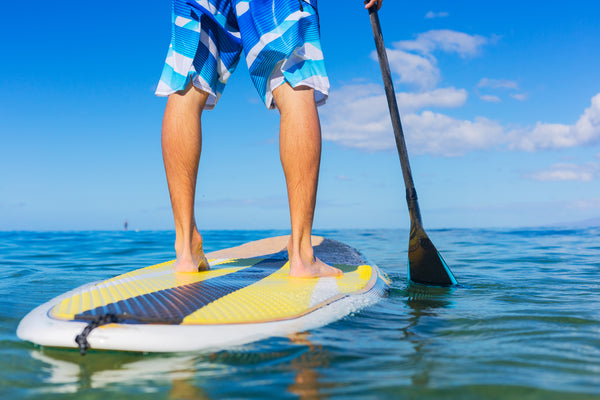SUP 101: Picking Your Perfect Board
 Keep it simple and that new ride will stay in your quiver forever
Keep it simple and that new ride will stay in your quiver forever
Standup paddling doesn’t have to be complicated. Board. Paddle. Hit the water. But for beginner’s, the sheer amount of choices out there can be overwhelming. Laird Hamilton lays down the case for the longboard outline, and gives you some hints on what to look for when purchasing your first board.
Start big. If you’re a beginner, go for a stable board that’s easy to paddle. Start with something that’s 11 to 12 feet long and nice and wide (at least 30 inches). As your paddling skill increases you can start getting more specialized with your board selection. Bigger boards are more stable and will make your first experience more enjoyable. If new paddlers purchase a board that’s too small, it will mess up their learning curve. Figure out how to stand on your board and be able to stand comfortably for as long as you want to paddle.
Think one-board quiver. Most people want to start with one board so you’ll need something that will allow you to do a little bit of everything. Something with glide. If you’re anywhere there’s wind, you’re going to be doing some kind of surfing. It might not be a giant wave but you will be doing a form of surfing. That’s why I like something with a longboard outline because it offers the most diversified use: you can surf a wave, paddle distance, and most importantly, it’s stable because the nose and tail are wide. The parallel outline makes it a very friendly board to use for every skill level. And even when you move on to different boards, you’ll keep your first board around to teach friends.
Think about durability. With board material, you get what you pay for. Most production boards today are made from epoxy. It’s better to pay for durable equipment. First time paddlers should avoid simple fiberglass boards (usually reserved for custom models) as they ding easier and many people who live inland don’t have access to people who can fix dings. Buy one durable board and it will be a mainstay in your quiver for years. The average person is going to put a board through serious paces, dropping it off the car, running it up on the sand at the beach.
Prolong the life of your board. For beginners, it’s not a bad idea to put clear rail tape on the rails of your board. There are several brands (use Google). You can also wrap your paddle with clear plumber’s masking tape from the hardware store. First-time paddlers are very likely to whack the sides of their board with the paddle. Adding rail tape protects your board and covering your blade creates more of a blunt object which is more likely to bounce off the board instead of ding it like the sharp edges of a paddle blade.
Written By Joe Carberry
for LairdHamilton.com